The Mind-Body Connection and Tantra Massage Explained
Ever noticed how your mind and body sometimes feel totally in sync—like when a piece of music gives you chills or you get butterflies before a big meeting? That's the mind-body connection in action, and it goes much deeper than you might think. Scientists now recognize this link as a major key to understanding stress, immunity, and even happiness. Enter tantra massage, an ancient practice designed to strengthen that bond, putting your whole system into a state of harmony that’s hard to describe until you’ve felt it for yourself. Now, tantra isn’t just about intimacy. It’s rooted in Eastern traditions that date back thousands of years, focusing on channeling energy (often called prana or chi) through your body. The idea is that by using touch, breathwork, and awareness, you can open up pathways that have gotten blocked by daily life—think stiff muscles, constant notifications, and worry on replay. The result? Deep relaxation and an awareness of your body that borders on meditative.
But let’s clear up a common myth: tantra massage isn’t just about pleasure (though pleasure is definitely part of the equation). It’s a holistic approach meant to unite body, mind, and breath so you feel more present, alive, and tuned in. Most folks walk away saying they feel lighter mentally, more flexible physically, and sometimes a little surprised at just how much tension they’ve been carrying around without noticing. And interestingly, a study published in the "Journal of Bodywork and Movement Therapies" in 2023 showed that regular practitioners of tantra massage reported higher levels of emotional well-being and better sleep compared to those who stuck with standard Swedish or deep tissue techniques.
So how exactly does this work? The session usually starts with a short chat and calming breathing. Your therapist will guide you in focusing your mind on the present moment—no doom-scrolling allowed. Then, with mindful touch, the therapist works through various strokes, using oils and techniques specific to tantra’s philosophy. These moves aren’t rushed. They’re about awakening all your senses, gently encouraging you to be in your body and let go of mental clutter. The longer, unhurried stimulation can also trigger the release of endorphins, oxytocin, and other feel-good hormones, all of which have been tied to stress reduction and even immune function. And unlike massages where you just drift off to sleep, tantra massage invites you to actively participate by tuning into your breath and noticing how your body responds. Some people describe the session as a ‘reset’ for their nerves, like hitting the refresh button on body and mind at the same time.
London, in particular, has become a hotspot for those searching for authentic tantra massage. Why? Well, big city life is stressful, and more locals—and visitors—are seeking out hands-on ways to deal with everything from job burnout to relationship tension. You’ll even find therapists blending traditional tantra elements with modern mindfulness—so if you’re worried about anything too esoteric or unfamiliar, know that most professionals make the experience as accessible and enlightening as possible, regardless of your background.

Why People Choose Tantra Massage: Tangible Benefits for Mind and Body
If you’re wondering why folks keep coming back for tantra massage, it’s not just because it feels good (though, let’s be honest, the pleasure factor is real). The main draw? It works on layers you didn’t know needed attention. Therapists often describe the body as a sort of map—loaded with areas that store stress, emotional baggage, and weird little aches you’ve ignored for years. Tantra massage aims to touch those spots, and more importantly, to help you fully feel what's going on in your body, rather than just zoning out like in a quick spa session.
A big perk is stress relief. One round of tantra massage can help melt away tension stored in your shoulders, lower back, or hips—places that are notorious for holding onto daily worries. But it goes further: by focusing on slower, intentional strokes and guiding your breath, tantra massage helps knock down the wall between your mind and body. This shift helps disrupt the cycle of nonstop thoughts, overthinking, and emotional ‘numbness’ that comes with modern stress. In studies, people report improved sleep, more regular moods, and even better focus at work. A friend of mine who worked in finance shared that after two tantra sessions, she started sleeping through the night for the first time in months—and her migraines faded away.
Tantra massage also encourages self-acceptance. It’s common for people to walk into a session feeling awkward or shy about their bodies, especially if they’ve felt judged in other settings. But in a safe, professional environment, many say they start to see their bodies with new appreciation—no filters or expectations, just curiosity and kindness. And for couples, tantra massage can rebuild connection in a way that’s playful and healing, helping partners communicate without words and discover new ways to support each other. Don’t be surprised if you find yourself noticing more energy and confidence afterwards, too.
Some therapists blend in breathwork, sound, or guided movement, making it a multisensory experience. You might hear gentle music, see soft lighting, and be invited to communicate your preferences during the session. The combination of these elements encourages your body to let go even more. Plus, the endorphins released during the massage support your immune system, so don’t be shocked if you start to skip the office cold season! For a lot of people, the biggest benefit is carrying those ‘zen’ vibes into the rest of life—feeling more grounded during tough conversations, approaching challenges with a clearer mind, or just not snapping at the barista when your oat latte is late.
If you’re just getting started, pro tip: communicate with your therapist. Let them know your comfort level, any injuries, or concerns. The best experiences come when there’s mutual trust and openness. And another unexpected plus: tantra massage helps you notice small details about yourself—tightness you’ve ignored, breaths you’ve been holding, or emotions you didn’t realize were stuck under the surface. This awareness is the true foundation of the mind-body connection, and it sticks long after the session ends.

Tantra Massage in London: Options, Booking, Safety Tips, and What to Expect
London has a vibrant tantra massage scene, with styles and options to fit almost any preference. Classic tantra focuses on chakras (energy centers in the body), paired with slow, sensual touch and mindful breathing. You’ll also find yoni and lingam massages; these are more specialized, targeting genital reflex points for those seeking deeper personal healing or intimacy. Couples tantra massage helps partners reconnect, build intimacy, and support each other in a playful yet profound way. And for those after a modern twist, some studios blend tantra with aromatherapy, modern mindfulness, or energy healing—great for folks who prefer a less traditional vibe.
So, how do you pick the right spot? Start by searching for reputable studios with experienced, certified therapists. If you’re in central neighborhoods like Soho, Marylebone, or Shoreditch, you’ll spot plenty of independent studios, but don’t just go for the flashiest ads. Check independent reviews on sites like Trustpilot, ask about therapist credentials, and don’t be shy to call ahead with questions. A genuine tantra professional will answer questions with empathy—and won’t pressure you into anything you’re uncomfortable with.
- Look for clear, professional websites with staff bios and detailed descriptions of sessions.
- Ask whether the session is tailored to your needs—some focus more on energy work, others on traditional Swedish or deep tissue elements.
- Be clear about any expectations or boundaries. A quality studio will welcome this and set clear, mutual consent from the start.
So, what happens during a typical session? First, you’ll chat briefly with your therapist about your goals and any concerns. You’ll be encouraged to relax with slow breathing or a brief visualization. The massage itself is typically done with warm oils and slow, flowing movements—imagine a dance between touch, breath, and stillness. Clients often stay partly covered, with the therapist only exposing areas being worked on, and you’re in control at all times. Expect a calming environment: soft lighting, gentle music, and maybe even scented candles. The session wraps up with grounding, a few minutes to just sit, breathe, and soak in the effects rather than rushing out the door.
Costs vary depending on therapist experience and session length. In London, you’ll usually pay anywhere from £80 to £200 per session, with some luxury studios charging even more for multi-hour or couple’s sessions. Many places offer package deals or beginners’ specials. Always ask about cancellation policies and what’s included in the price—some studios throw in extras like herbal tea or aromatherapy for no extra fee. If a price seems suspiciously low, that’s a red flag—it’s worth paying for professionalism and safety.
Speaking of safety, always prioritize studios that work openly and professionally. Never feel pressured to do anything uncomfortable or share more than you want. Boundaries are sacred here, and legitimate tantra massage never crosses into illegal or exploitative territory. Wear whatever makes you comfortable—most people choose loose clothing and bring a change of underwear. If you have allergies (say, to coconut oil or essential oils), let your therapist know ahead of time.
For convenience, many studios now let you book online, often showing real-time availability via calendars linked directly to therapists. You can browse profiles, compare specialties, and pick a session length that fits your schedule. And if you want a discreet experience, outcall tantra massage is an option—just make sure therapists are properly vetted and that your home setup is safe and private.
| Tantra Massage | Swedish Massage |
|---|---|
| Deeply focuses on mind-body, energy, breath, intimacy, often includes guided breathing or mindfulness | Focuses on muscle relaxation and tension relief—uses long, gliding strokes to soothe muscles |
| Possible emotional release, long-lasting impact on mood and connection, encourages active participation | Generally passive—client relaxes, therapist works on knots; rarely incorporates emotional awareness |
| Tailored to individual needs, can incorporate couples or erotic elements if desired (within boundaries) | Standardized routines for relaxation or sports recovery, no sensual/energy work |
| Pricing generally higher due to specialized training (about £80-£200/session) | Pricing more standard (£50-£120/session in London) |
Still got questions? You’re not the only one. Here are some quick answers:
- Is tantra massage appropriate for beginners? Absolutely—therapists are trained to ease you in, no prior experience needed.
- Do I need to undress fully? Only to your comfort level. You can discuss boundaries with your therapist before starting.
- Is tantra massage legal in London? Yes, when performed as a professional, therapeutic service by certified practitioners.
- Can couples book sessions together? Many studios offer special couples tantra sessions—just request this when scheduling.
- How often should I book? Listen to your body; some come weekly, others monthly or just for a treat after a stressful event.
Ready to discover what deep relaxation actually feels like? Whether you’re craving a way to reconnect to yourself or want to shake off that next-level stress, a tantra massage in London could be the reset button you didn’t know you needed.
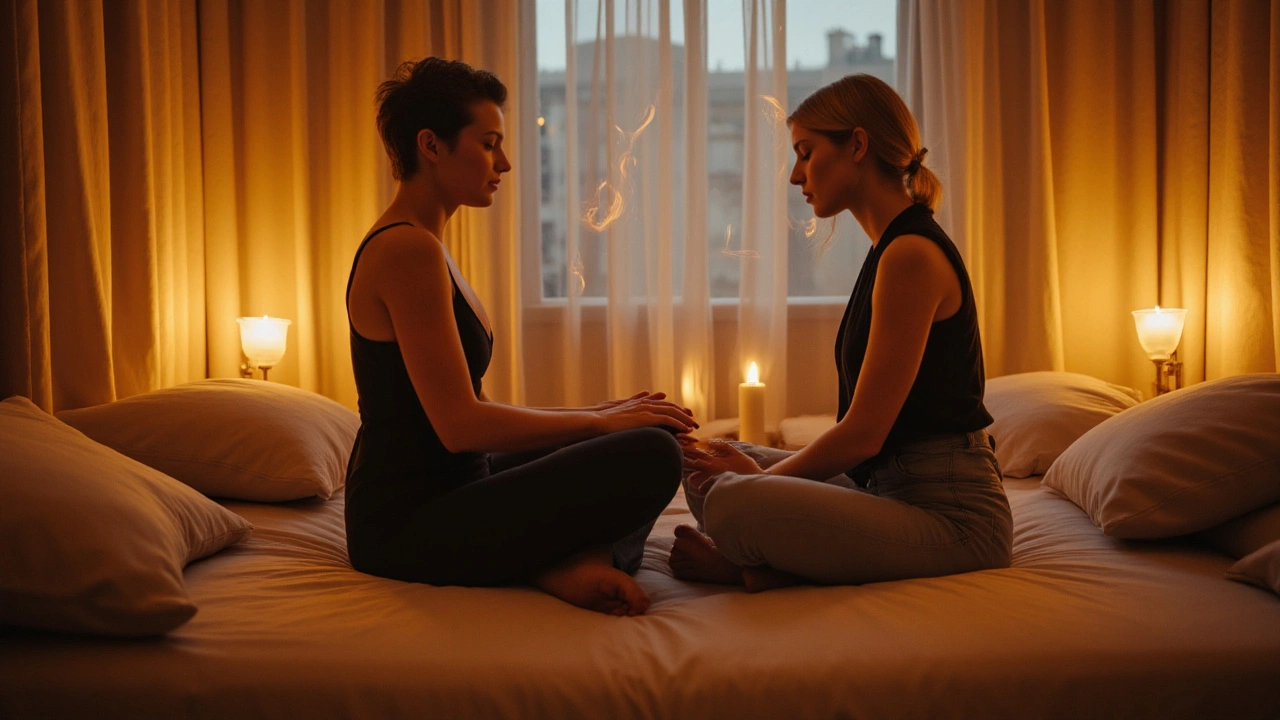
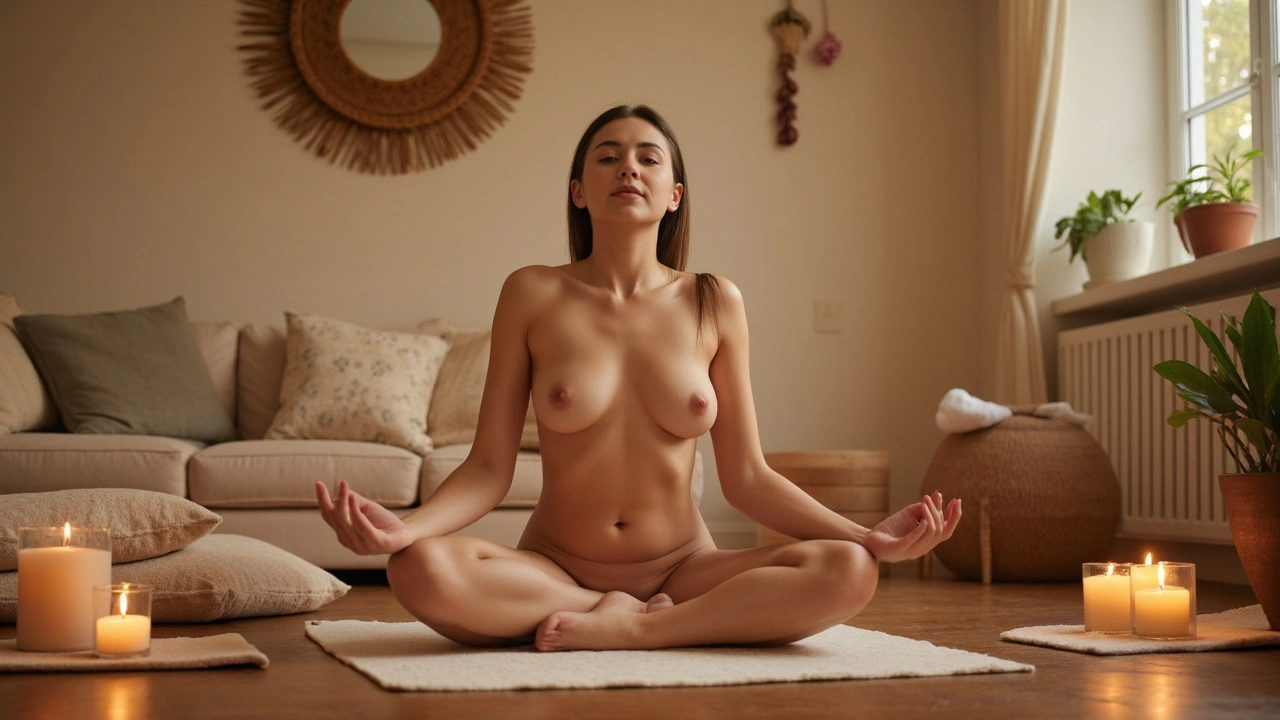
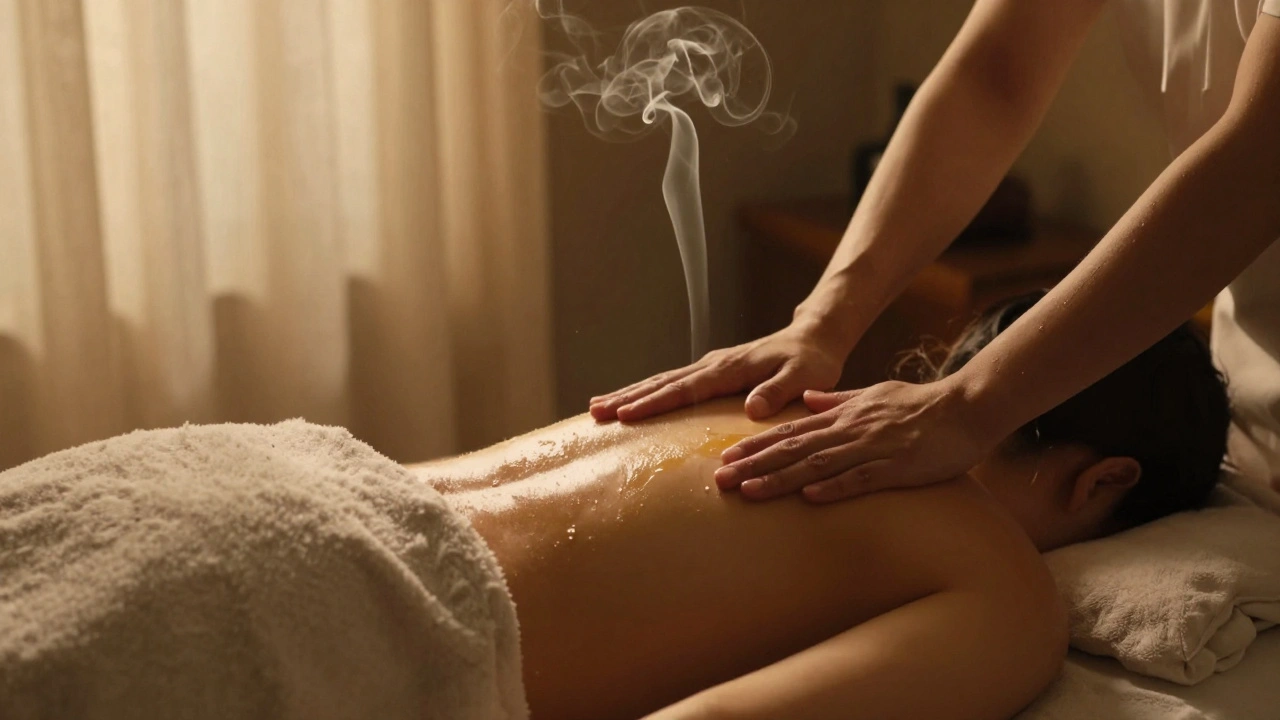

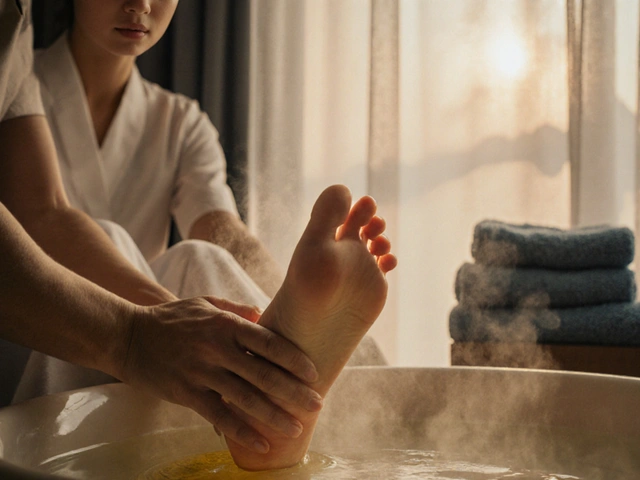


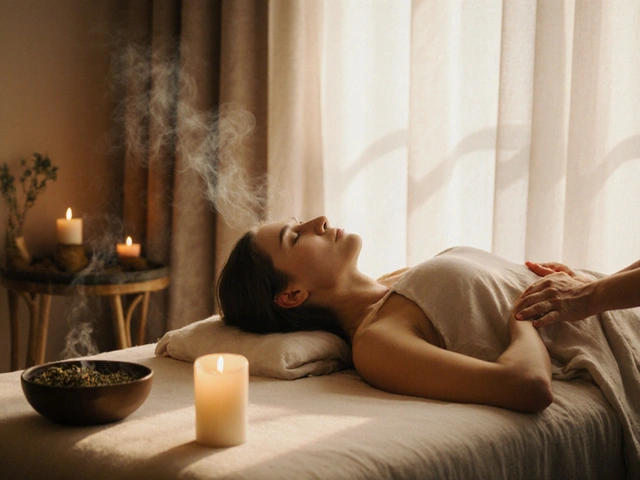
Colin Napier
August 2, 2025 AT 15:15Right off the bat, I have to say the post nails it about the mind-body connection in tantra massage – it’s not just some woo-woo nonsense.
Understanding how the practice deeply engages both physical and mental states clarifies why it can be so therapeutic.
Having studied various healing modalities, tantra’s focus on breath and energy flow really stands apart.
It’s crucial people get the safety aspect right as well, especially in a city like London where accessibility equals responsibility.
I do wish the article had more specifics on pricing tiers though – London has such variance.
Overall, a pretty solid intro for anyone curious about diving deeper into the wellness benefits.
Looking forward to seeing more detailed exploration on therapist qualifications next time!
Patsy Ferreira
August 2, 2025 AT 15:49Honestly, I find a lot of the praise for tantra massage to be overblown and somewhat misleading.
Words like "enhances the mind-body connection" are tossed around without concrete scientific backing, and that bothers me.
The article skirts around actual empirical evidence and leans heavily on vague benefits and spiritual claims.
Moreover, the emphasis on safety is essential but should encompass more than just booking insights—it must include standardized training and certifications.
People need to approach this with a critical eye, especially given how easily some practitioners might exploit vulnerability.
And, yes, the presence of typos throughout the article diminishes its credibility.
Professionalism matters when discussing wellness and health.
Peter Jones
August 2, 2025 AT 16:22I appreciate the balanced overview provided in the article.
Exploring tantra massage as a means to improve the mind-body connection is certainly intriguing from both scientific and philosophical perspectives.
It’s important that anyone considering this therapy be informed about not only the benefits but also the necessary precautions.
The mention of pricing and safety guidance is practical, especially since London is a diverse market with varying levels of practitioner experience.
I'd be curious to learn more about how different tantra massage techniques address specific aspects of psychological wellbeing.
Moreover, understanding client testimonials and evidence-based research could enhance reader confidence.
Overall, a thought-provoking read for those interested in holistic wellness.
Douglas McCarroll
August 9, 2025 AT 04:45This piece really resonates with what I've experienced in my coaching practice focused on holistic health.
Tantra massage isn’t just a physical treatment; it’s a gateway to harmonizing internal energies which supports both emotional and physiological healing.
By deliberately engaging the parasympathetic nervous system through mindful touch and breath work, deep relaxation ensues that can break chronic stress cycles.
From a clinical perspective, incorporating tantric principles encourages clients to embrace somatic awareness—essential for lasting wellness.
Pricing transparency and robust safety protocols reinforce trust between therapist and client, which is foundational.
If practiced ethically, tantra massage can indeed become a keystone of well-rounded self-care routines.
I encourage anyone curious to approach it with openness and intention.
Jillian Angus
August 12, 2025 AT 16:05The thing that worries me about tantra massage is how it sometimes gets mixed up with less reputable practices.
In many places, especially big cities, there's a slippery slope where spiritual healing can bleed into exploitation or worse.
This article touches on safety but feels a bit surface-level considering the potential risks.
Plus, I can’t help but suspect there's a hushed undercurrent regarding some bookings and what exactly goes on behind closed doors.
We have to be vigilant and demand full transparency and professional credentials—not just buzzwords like "mind-body connection."
Otherwise, it’s easy for unsuspecting seekers to get caught up in something harmful.
Anyone trying tantra needs to keep their guard up and thoroughly vet practitioners.
Jennie Magalona
August 18, 2025 AT 10:59I find this topic fascinating from a cultural and philosophical standpoint.
Tantra has origins steeped in ancient traditions, emphasizing a sacred union of body and spirit that’s often misunderstood in Western interpretations.
The modern approach to tantra massage can serve as a bridge, reconnecting individuals with embodied presence in an increasingly fragmented world.
The article provides a useful primer for London-based seekers, but I’d love to see more about how cultural context shapes experience and expectations.
I also appreciate the discussion of safety and informed consent, which are critical in honoring the integrity of this practice.
By demystifying tantra massage, we can open doors to deeper wellness without fetishization or commodification.
It’s a delicate balance but worth striving for in our wellness journeys.
William Terry
August 24, 2025 AT 05:52Look. Tantra massage isn't just some trendy luxury, its an ancient practice with real benefits.
If people take the time to understand the real meaning of tantra, they'll appreciate how it cultivates relaxation and connection that modern life totally lacks.
And ya gotta have trust in your therapist, so safety and transparency should be on the top of everyone's minds.
It's not about quick fixes; it's about tuning in deeply to your body's signals.
London's a great place to find skilled practitioners but people must discriminate carefully.
Sometimes folks get caught up in hype and forget that real wellness requires respect and responsibility.
So approach it thoughtfully, and you might unlock layers of calm and clarity you didn't even know were there.
Aashish Kshattriya
August 26, 2025 AT 13:25Hmm… I can’t help but wonder if there’s some kind of hidden agenda behind the whole tantra massage hype in cities like London.
Could this just be a cover for other motives or financial exploitation?
The language always sounds so spiritual and positive but often lacks concrete proof or regulation.
Someone should look deeper into how bookings work and if clients really get what they expect.
I’m skeptical whether all practitioners follow strict ethical codes or if there’s a lot left to chance.
Not trying to sound paranoid, but being cautious is smart given the sensitive nature of this practice.
Anyone considering tantra massage should research thoroughly and proceed with eyes wide open.
Andrew Cheng
August 30, 2025 AT 00:45Hey, I just wanted to share that I tried tantra massage myself recently in Toronto, and it was honestly a transformational experience.
The focus on breath and energy really helped me break some long-standing blocks in my body.
It wasn't just the physical sensation but how it made me reconnect on a deeper level to my emotions.
Booking was straightforward, and my therapist was totally upfront about the process, which made me feel safe.
London folks reading this should really check out reputable places; it’s worth every penny if you’re open to the journey.
I’m here to answer any questions about what to expect!
Sometimes we all need a little help unlocking that chill state we crave.
Theophilus Twaambo
September 1, 2025 AT 08:19The post seems informative but I must point out some glaring errors in grammar and punctuation that distract from its message.
Precision in language is key when explaining something as complex as mind-body dynamics.
Furthermore, I question how thoroughly the claims about benefits are vetted.
Are we simply accepting anecdotal reports or is there research backing these assertions?
Safety is mentioned but what about professional standards for practitioners?
This isn’t a casual foot rub; it’s essential to maintain boundaries and clear ethical guidelines.
I’d recommend anyone interested do comprehensive homework before booking.